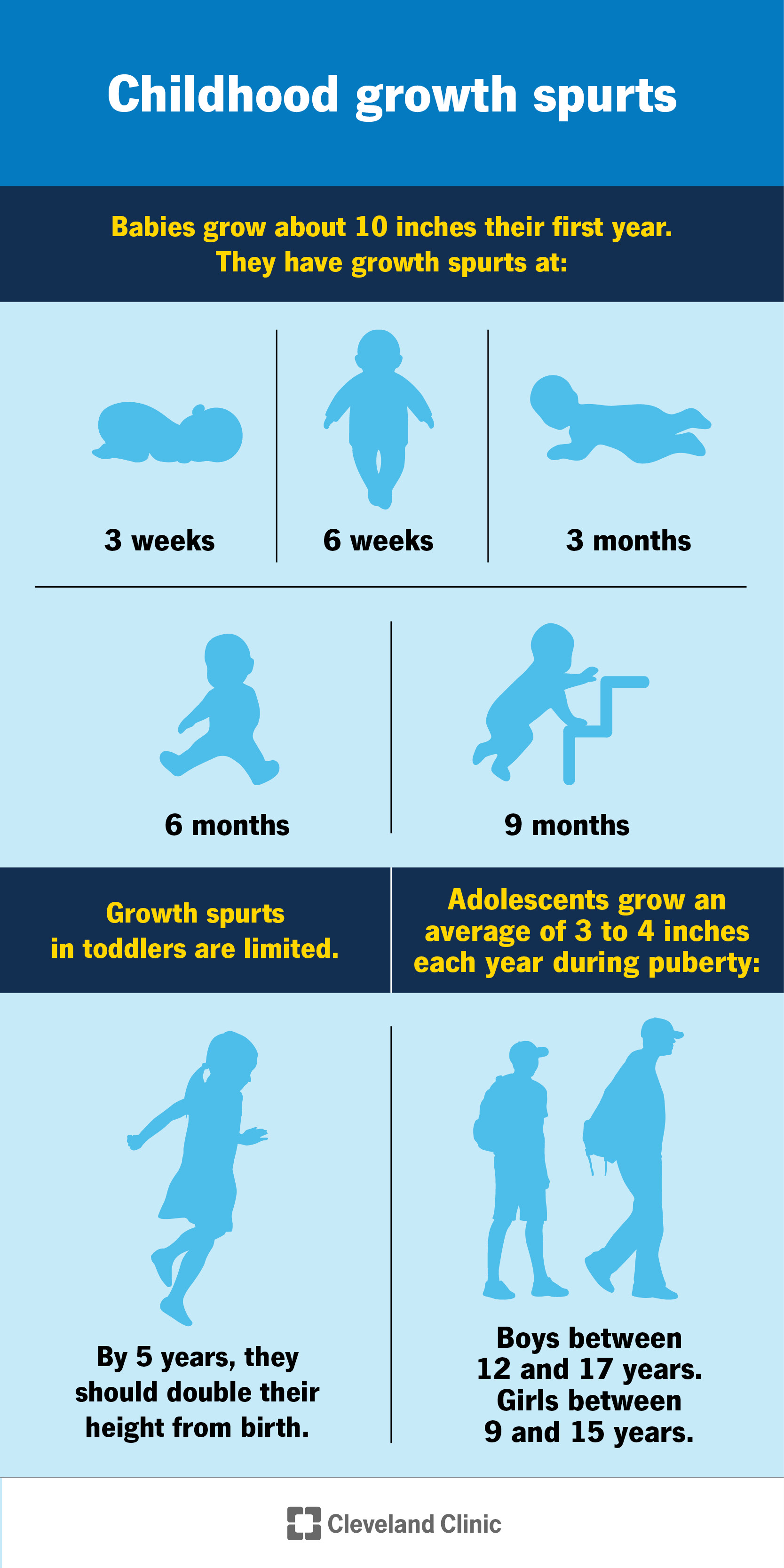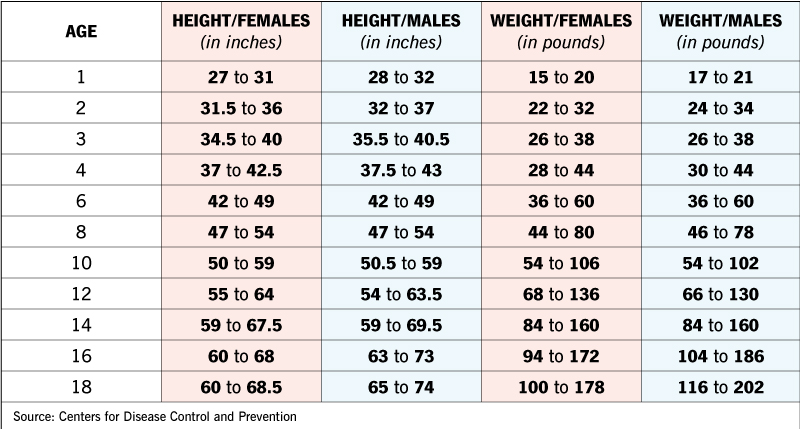Growth spurts are short periods of time when your child experiences quick physical growth in height and weight. Growth spurts are a normal part of your child’s development. They occur at different stages of childhood until they reach physical maturity.
Advertisement
Cleveland Clinic is a non-profit academic medical center. Advertising on our site helps support our mission. We do not endorse non-Cleveland Clinic products or services. Policy

A growth spurt is a short period of time when your child’s height (length) and weight rapidly increase. Growth spurts affect babies, children and adolescents. Each child’s growth pattern is unique. Your child will grow at their own pace until they reach physical maturity.
Advertisement
Cleveland Clinic is a non-profit academic medical center. Advertising on our site helps support our mission. We do not endorse non-Cleveland Clinic products or services. Policy
Growth spurts are nothing to worry about. They’re a natural, healthy part of your child’s development. Before long, this time will pass. Your child will be a little taller and a little heavier. They’ll be on their way to becoming a full-grown adult.
Many baby growth spurts happen during your infant’s first year. They’ll likely happen quickly and suddenly. While every baby is different, typical infant growth spurts occur at:
In all, your baby will grow about 10 inches (25 centimeters) longer during their first year. They’ll triple their weight by the time they turn 1.
Baby growth spurts are the physical changes that occur as your infant ages. They’re different than developmental milestones. They may happen at the same time, but developmental milestones are the actions and skills that mark your child’s maturity at specific stages (like language development and fine motor skills).
Growth spurts continue at different stages of your child’s development based on their age. Toddler growth spurts are limited. Their height and weight usually increase at a consistent pace.
Between preschool and puberty, your child’s eating habits will change. This makes their growth slow and steady. By 5 years old, your child should double their height from birth. This growth continues with regular increases in height and weight each year until adolescence.
Advertisement
Adolescents will reach their growth spurts around the same time as puberty. This age varies depending on their sex. Females experience growth spurts between ages 9 and 15. Males experience growth spurts between ages 12 and 17. Adolescents will increase in height at an average of 3 to 4 inches (9 to 10 centimeters) each year during a growth spurt.
Changes in your child’s height and weight are the most immediate signs that they’re experiencing a growth spurt. Other signs of a growth spurt may include:
Growth spurts don’t feel like anything. You may notice eating or sleeping changes that make your baby fussier than normal. But that isn’t a sign of pain. Growth spurts don’t cause arm and leg pains like growing pains do. Any uneasiness during your child’s growth spurts is temporary.
Genetics play a key role in growth spurts. Your child’s genes will determine how tall they’ll grow. Genes will also be a factor in how quickly your child will reach their greatest height.
In addition to their genetic makeup, environmental factors can affect your child’s growth. These can include:

Your child’s healthcare provider will track your baby’s height and weight during their well checkups. They’ll use a scale, measuring tape or measuring table (stadiometer). Growth charts identify whether your child is growing on target according to their peers of the same age.
Since a growth spurt doesn’t cause any health problems, there’s no need to rush to the pediatrician’s office. Instead, your child’s provider will track changes in your child’s height and weight at their next checkup. They’ll let you know if they’re following the typical pattern of growth for their age.
Babies younger than a year old express their growth spurts through fussiness and periods of increased hunger. For school-age children and adolescents, growth spurts trigger changes in appetite, sleep and behavior. During your child’s growth spurt, you can support them by:
Advertisement
Contact your child’s provider if all the following describe your baby:
Questions you may want to ask your child’s provider include:
Growth spurts don’t last long. In babies, they tend to be shorter — they may last up to three days. Growth spurts in adolescents may occur multiple times over a couple of years.
No, and you don’t want to prevent them. They’re a natural part of the growth process. Your child will experience growth spurts at their own pace. They’ll happen when their body says it’s time to increase their height and weight.
Growth spurts happen in the blink of an eye and often spark the statement, “Look how big you’ve gotten!” at gatherings with your family and friends. Children grow at their own pace. Each child will develop when their body and genes tell them it’s time. If you notice your child isn’t meeting height or weight expectations for their age, talk with their healthcare provider.
Advertisement
As your child grows, you need healthcare providers by your side to guide you through each step. Cleveland Clinic Children’s is there with care you can trust.

Last reviewed on 08/14/2025.
Learn more about the Health Library and our editorial process.